The 2022 Volkswagen ID.4 is an unusual electric vehicle in that it strives to be rather normal. It’s not a dorky economy hatchback, an exotic super sedan or a segment-bending oddity like the Hyundai Ioniq 5, Kia EV6 or Mustang Mach-E. Nope, the ID.4 is unapologetically and quite obviously a compact SUV. It has the dimensions of one and offers comparable utility, albeit skewing a little more toward passenger than cargo space. For someone looking to make an easy transition from a gas-powered compact SUV to an electric one, an ID.4 could be a smart way to go.
It may also be an extremely frustrating way to go because the interior is a constant source of frustration and irritation. We go in depth below, but in short, the touchscreen interface is a mess and the touch-sensitive controls don’t work well. For this reason, we cannot recommend the ID.4 over those options mention above (the Tesla Model Y is far more expense if you’re wondering). It really is a dealbreaker, which is a shame because Volkswagen’s electric SUV is otherwise surprisingly fun to drive, offers competitive range, is reasonably priced and has excellent safety ratings.
Interior & Technology | Passenger & Cargo Space | Performance & Fuel Economy
What it's like to drive | Pricing & Features | Crash Ratings & Safety Features
What's new for 2022?
Volkswagen says that the ID.4 will have improved EPA range estimates for 2022, but as of early March 2022, those estimates still hadn’t been published. One improved figure we do know, however, is that the ID.4’s fast-charging space increases to 135 kW from 125. In terms of equipment, Auto Hold is now standard (available in many other cars, it holds the car in place without brake application after the car is brought to a stop by you or the adaptive cruise control system).



What are the ID.4 interior and in-car technology like?
Although the ID.4 is appealing in all other sections of this review, its interior is so frustrating to use that we have a hard time recommending the entire car. It’s that bad.
Basically, in its effort to make the interior look futuristic, Volkswagen made it difficult for those of us still used to the way things work in 2022. Capacitive-touch “buttons” replace all center stack buttons and knobs, and while it isn’t the first car to do this, it also isn’t the first to make them tolerable. In fact, they’re worse than most. Part of the reason is that they aren’t illuminated at night, so you just end up blindly pecking away at glossy plastic hoping you hit your intended control. Even formerly simple operations like operating electric windows or adjusting the side mirrors have an extra layer of complication. A regular driver would likely learn the ID.4’s quirks, but there’s really no benefit to any of this nonsense.
Then there's the central touchscreen, available in 10- or 12-inch sizes with broadly the same user interface. The graphics are slick and colorful, looking every bit as futuristic as is expected for an EV and in keeping with the interior's overall vibe. Unfortunately, it can be very slow to boot up, which is a problem when it controls so many vehicle functions. Next, although it controls complicated function well enough, something simple like changing a radio station can be infuriating. Radio presets, be it for terrestrial or Sirius satellite (pictured below left), are convoluted to select and to program, and seemingly cannot be displayed at the same time as the radio info (a big deal for satellite). We constantly drive new cars with different radio interfaces, and this is easily the most frustrating we've come across in many years, both in terms of learning and using thereafter. While many and perhaps most drivers play music in some way through their phones these days, radio is still a thing, and there's no excuse for this nonsense.
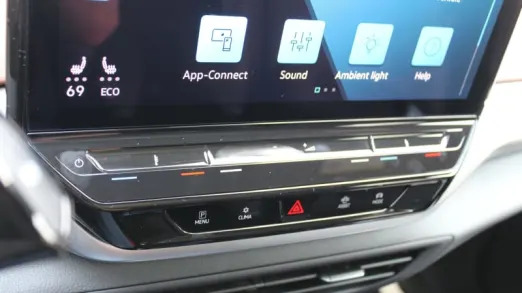
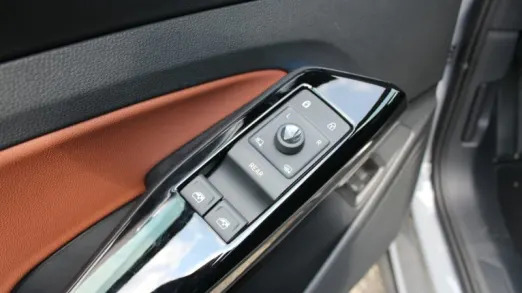
How big is the ID.4?
If you look at the specs, you'll see the VW ID.4 is right in the middle of the compact crossover bunch. However, its electric architecture makes it a Granny Smith in a basket of Galas. Yes, it's not as long as a Honda CR-V or Toyota RAV4, for instance, but its wheelbase is considerably longer. That's best seen in the truly gigantic back seat. We were able to fit an enormous rear-facing Britax Boulevard child seat behind both the passenger and driver seat set for a 6-foot-3 driver. That means you can fit two rear-facing car seats in the back seat, a rarity, while also equating to palatial legroom for big kids and adults. Heck, go ahead and bring along a few basketball players.
Admittedly, the ID.4’s prime electric competitors, the Hyundai Ioniq 5 and Kia EV6, have similarly generous passenger space due to similar architectural reasons. VW holds a decisive advantage in terms of cargo capacity, however. It has 30.2 cubic-feet of space behind its back seat, which lands it in the middle of the compact SUV pack. In our ID.4 cargo area luggage test, the ID.4 managed to hold more stuff than the Mazda CX-5, but fell short of the RAV4, CR-V and others. It also has a more versatile space than the Mustang Mach-E.
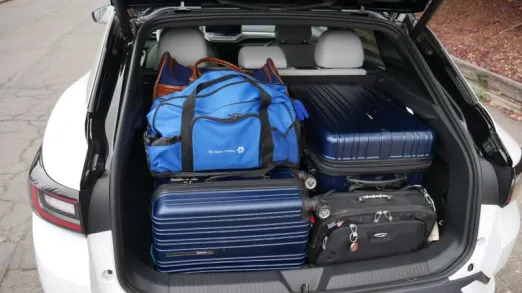
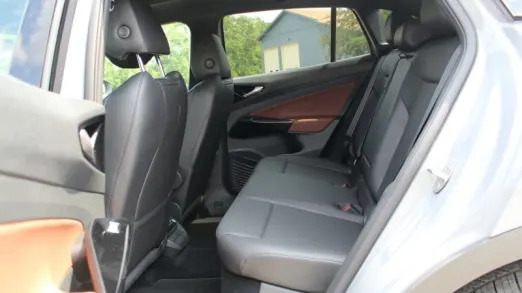
What are the ID.4 range and performance specs?
The ID.4 offers a choice of rear-wheel-drive or all-wheel-drive models. Because the latter is achieved by adding a second motor to the front axle, that means that each drivetrain has a different power output. Both have the same 82-kilowatt-hour battery pack. Unlike some competitors, there is no option to upgrade to a larger battery pack with a longer range.
The rear-wheel-drive ID.4 has 201 horsepower and 229 pound-feet of torque. Expect a 0-60 time in the mid-8-second range, which is a bit slow for a compact crossover but typical for base electric SUVs. EPA range estimates for 2022 still weren’t available at the time of this writing, so we can only say that Volkswagen says they will be better (likely slightly so) than 2021’s estimates of 260 for the base Pro and 250 miles for the Pro S. In real-world testing of a Pro S, we saw range well in excess of its EPA-estimated 250 miles.
The ID.4 AWD has 295 horsepower. VW has not published a total torque figure at the time of this writing. Its 0-60 time plummets down to 5.7 seconds, which is blisteringly quick for a compact crossover. What a difference a second motor makes. At the same time, range doesn't take that much of a hit as the AWD Pro’s 2021 estimates were 249 miles and the AWD Pro S will go 240 miles.
One advantage for the ID.4 is that buyers get three years of free charging at the Electrify America network of EV chargers (a Volkswagen-owned outfit, which was part of its penance for VW's diesel emissions cheating). One disadvantage is that although the ID.4’s max charge speed was upgraded to 135 kW for 2022, it is still well below the Kia EV6 and Hyundai Ioniq 5 that top out at 240 kW and can therefore take advantage of 350 kW chargers.


What's the ID.4 like to drive?
Volkswagen's performance bullseye with the ID.4 was compact SUVs rather than neck-snapping, high-performance EVs. You still get the immediate, smooth and utterly quiet power delivery of an EV, which makes it feel far more potent in around-town driving than the Honda CR-V's of this world. But should you merge onto the highway, you'll find the limitations of its horsepower result in ultimate acceleration that's best described as "sufficient." Stepping up to the more powerful all-wheel-drive model does improve things, but not to the extent of a Kia EV6 GT or one of the more powerful Mustang Mach-E models. That's more a factual statement than a complaint.
As for its ride and handling, the ID.4 quite clearly sprouted from the European branch of the Volkswagen family tree that spawned the Golf rather than the American one featuring bigger, cushier cars like the Passat and Tiguan. The ride is firmer and more controlled, and the steering more immediate and connected in its responses (though still awfully numb). When combined with its ultra-low center of gravity and rear-wheel-drive architecture, it all amounts to a surprisingly fun crossover to drive. We actually enjoyed flinging it around a mountain more than the Mustang Mach-E, a result that was just as surprising to us.
That said, the ride does let you feel more impacts from poor pavements, so some may lament the ID.4's European feel. There's also quite a lot of road noise, and despite the brake pedal having a natural feel to it, we wish we didn't have to use it so much. The ID.4 doesn't provide a heavy regenerative braking mode that allows for so-called one-pedal driving. It does have "B" mode that results in braking when you lift off the throttle, but the amount is comparable to the "low" modes of other EVs.
What other Volkswagen ID.4 reviews can I read?
2021 Volkswagen ID.4 vs 2021 Ford Mustang Mach-E Comparison Test
We put the two long-range, rear-wheel-drive EVs head to head. The results were surprising, with certain conclusions being the opposite of what we would've expected. For instance, we had more fun driving the Volkswagen, but the Ford had the nicer and less infuriating interior.

2021 VW ID.4 First Drive Review
In our first drive of the ID.4 we find that VW's mainstream approach seems right, but wondering it might result in it blending into the background of both the compact SUV and EV markets.
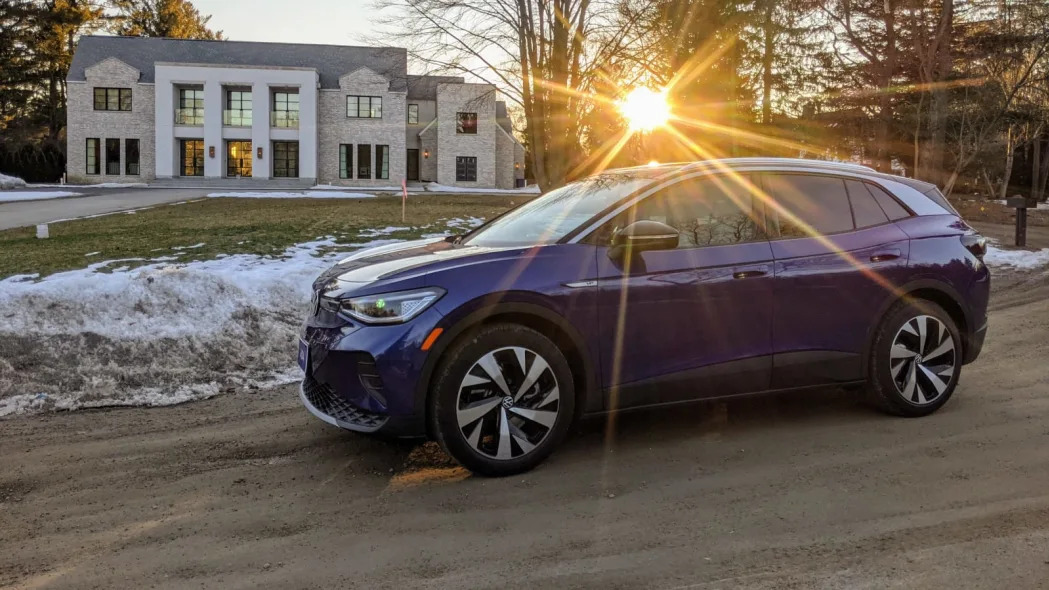
Officially, the ID.4 cargo capacity numbers are listed at 30.3 cubic-feet with the back seat raised and 64.2 cubic-feet when lowered. To put that into context, we load our standard assortment of luggage to see how the ID.4's cargo area compares to other compact SUVs.

How much is the 2022 ID.4 price and what features are available?
The ID.4 is offered in Pro and Pro S trim levels, both of which offer rear-wheel or dual-motor all-wheel-drive powertrains. The Pro is $41,955 (including the $1,195 destination fee), and the Pro S is $46,455. The dual-motor AWD versions add $3,680 to those prices, which is steep for an all-wheel-drive system, but remember that you also get a lot more power. It's as much a performance upgrade as it is an all-weather one. Prices are also before the $7,500 federal tax credit, which is still in effect for Volkswagen and other companies except Tesla and GM.
The base Pro includes 19-inch wheels, dual-zone automatic climate control, six-way power seats, cloth upholstery, heated front seats and steering wheel, a digital instrument cluster, a 10-inch touchscreen, wireless device charging, four USB ports, in-car WiFi, Apple CarPlay, Android Auto, and natural voice controls.
The Pro S adds the larger touchscreen, leatherette seating surfaces, eight-way power seats with memory and massaging lumbar, a rear-seat center armrest and pass-through, a height-adjustable rear load floor, a hands-free power liftgate, a panoramic glass roof, adaptive headlights, power-folding mirrors with memory and puddle lights, and a light-up VW grille logo. There’s only one option available: The Gradient Package can be added to the Pro S, and includes 20-inch wheels, silver accents on the C-pillars, silver roof rails, and a black roof for $1,500.
Unlike some EVs, the ID.4 is available in all 50 states.
What are the ID.4 safety ratings and driver assistance features?
The ID.4 has a full complement of standard active-safety features. Those include forward-collision warning with pedestrian detection and automatic emergency braking, adaptive cruise control with stop-and-go capability, lane-keeping assist, blind-spot and rear cross-traffic warning, road-sign recognition and parking sensors.
NHTSA gave the rear-wheel-drive ID.4 a perfect five stars for overall, frontal and side crash protection. Curiously, it does not provide an overall rating for the all-wheel-drive ID.4 despite five-star frontal and side ratings. The Insurance Institute for Highway Safety named it a 2022 Top Safety Pick+ for its best possible crash ratings and sufficiently high ratings for its headlights and automatic emergency braking system.
Related Video:
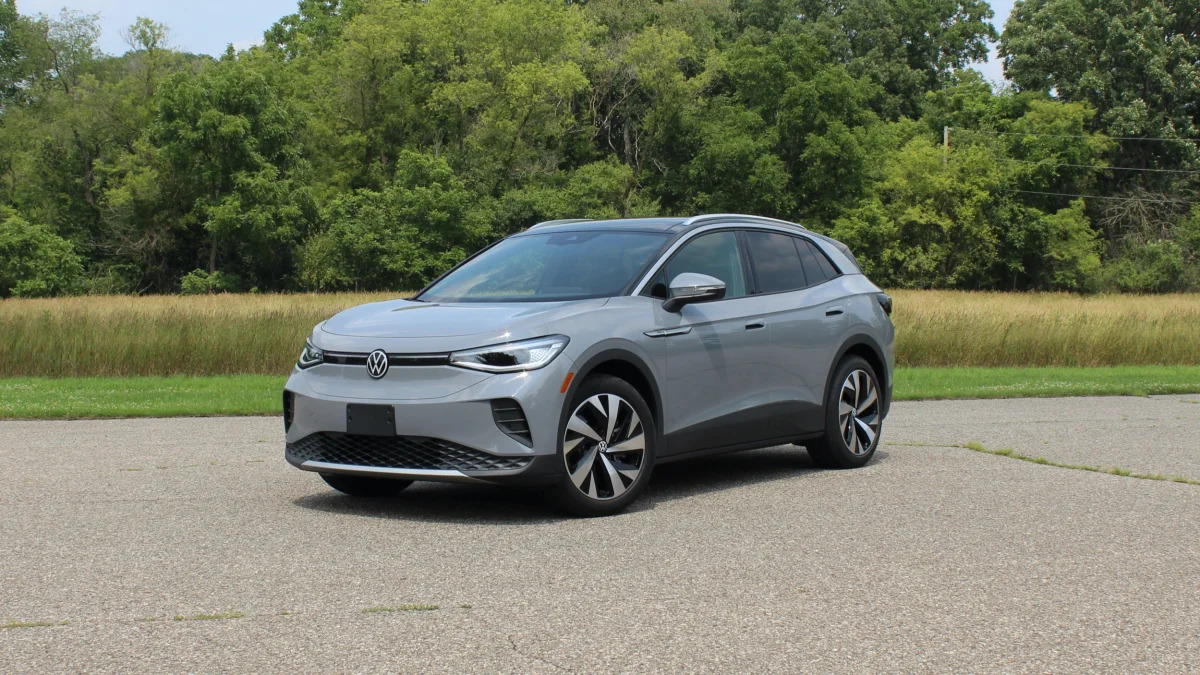










Sign in to post
Please sign in to leave a comment.
Continue